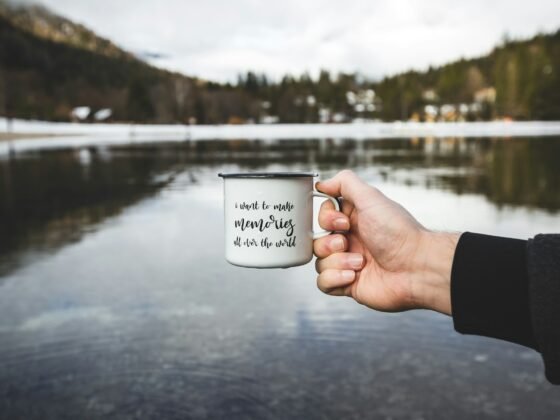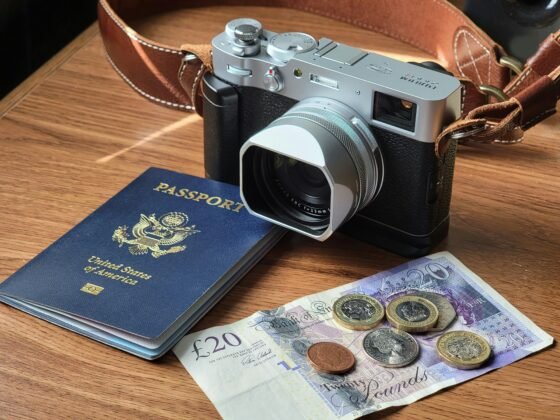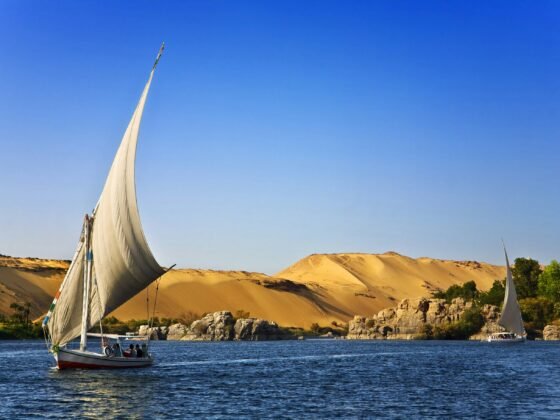Tibet Adventure Travel Guide: Ideas and Inspiration
PureTravel Says
“A land of pure spirituality afforded by its religion, Tibet is a perfect getaway holiday for anybody seeking to forget their cares for a while. This Buddhist stronghold is located atop a plateau 4,900 meters above sea level and is bordered to the northeast by the People’s Republic of China and by India to the west and shares a border with Nepal.”
-----------------------------------------------------------
Holiday Highlights
Walking & Trekking – Tibet’s walking and trekking holidays offer you a close look at the religion and the way of life of the Tibetans. Journey up the mountains to the sacred meditation place of several Buddhist monks. Visit Tibet’s Ganden and Samven monasteries, and maybe even participate in Buddhist prayer services. See the Yarlung Valley, the palace of the first Tibetan king Nyatri Tsenpo who is said to have fallen from the sky to Tibet. Climb up to the foot of the northern face of Mount Everest and experience the Rongbuk Monastery, the highest monastery in the world. Most of all, enjoy picturesque landscapes like the snow-capped peaks of Tibet and the imposing view of Mount Everest itself from the Rongbuk Monastery.
Culture & History – Tibetan culture is purely a culture on its own. It contains influences of Indian and Chinese architecture and even Greek art, but all applications of this influence are rooted in something that Tibetans can call their own: their religion. All around you in Tibet, you will see and feel an air of Buddhist spirituality.
Rafting – Tibet offers five rafting experiences for the adventurer: the relaxing Lhasa River run, as well as the challenging Tonglu, Kongpu-Draksum, and the Drigung river runs.
Wildlife – There are endangered species in Tibet’s animal life. Tibet, under Chinese administration, has enacted severe laws intended for the protection and preservation of these almost-extinct animals. You can still enjoy and view them through the five animal reserves created under the 1991 Wildlife Protection Act.
Mountain Biking – Experience the rare thrill of biking at several hundred feet above sea level. Cross Tibet to Nepal through the world-famous Himalayas Highways up in the mountains in the two countries. Along the way, get a glimpse of Tibetan and Nepalese culture through visits to several remarkable towns on your itinerary: the sacred town of Panauti and the town of Dhulikel near the Namo Buddhist monastery, among others.
-----------------------------------------------------------
When to Go
The peak trekking season in Tibet is between the months of April and November. It is a good time to meet other travellers and holiday adventurers whose aims are the same as yours: enjoy the landscapes and mountains of Tibet. The biking season is popular all year long. Rafting, on the other hand, is best experienced during the summer when the rivers are in high waters because of regular rains.
-----------------------------------------------------------
Top Tips
- Be respectful as Tibet is a deeply religious and spiritual place.
- Do not mock religious figures as you may offend local people.
- When biking and rafting, pay attention to safety instructions.
- Make the most of your holiday and leave all your worries behind.
-----------------------------------------------------------
Holidays in Focus
-----------------------------------------------------------
Walking and Trekking
Tibet is a walker’s paradise. The country has many beautiful landscapes and holy mountains to climb and trek. These places provide a good place to relax from the busy life of the city, as well as a place to be awed and overwhelmed by the spirituality and holiness of the Dalai Lama’s country that is Tibet.
Some of the best trekking destinations in Tibet are the Ganden and Samyen monasteries. The first monastery is visited right before the trek begins in Lhasa, after a tour of the capital itself, and serves as a starting point. The trek can take you across highland yak pastures and the Shugu La Pass, which is about 17,000 feet up in the mountains of Tibet on the way to Samyen.
Along the way, you will come across the sacred mountain of meditation where several saints and teachers of the Buddhist faith listened to the voice of God. This mountain is notable for being the place of meditation for Guru Padmasambhava who founded the Tibetan form of Buddhism. Being high above sea level, you bear witness to the magnificence of snow-capped Tibetan mountains and the plains of the countryside.
The trek is wonderful not only for its show of landscapes but also for the rare opportunity to have a close look at the religion and way of life of Tibet. The monasteries, which are the ultimate destinations of which the trek is only a journey, offer the traveller a peek into Buddhist prayer services.
The journey also takes you to the Yarlung Valley where the famous Yambu Lakang is located. According to Tibetan legend, it was built for the heaven-sent king Nyatri Tsenpo. It is also said that in the 5th century, an unreadable Buddhist sutra hit the roof of the palace as it fell from the sky and was kept in Yambu Lakang until it could be interpreted. Before Lhasa became the capital, Yambu Lakang served as palace for many kings and royalty including Songtsan Gampo himself who moved the capital. The palace later on became a chapel and a Gulugpa monastery. Nowadays, it serves as shrines for the many ancient kings of Tibet and their ministers.
Another wonderful trek through Tibet is through the North Everest base camp trek. This trip, which also starts in Lhasa, takes you past the Turquoise Lake on the way to the town of Gyantse. In Gyantse you will find the Kumbum Stupa. After Gyantse, the tour proceeds to the town of Shigatse, where you will find the Tashilungpo monastery and the Chorten dedicated to the late Panchen Lama, and then will proceed to Old Tingri where the trek formally begins. Cross the Langma La Pass—situated 16,900 feet above sea level—and reach the Rongbuk monastery, considered as the highest monastery in the world. From the Rongbuk Monastery, you are treated to a view of the north face of the highest mountain in the world. After this, the trek goes downhill by vehicle through the Himalayas Highway and ends up in Kathmandu, Nepal.
-----------------------------------------------------------
Culture and History
The greatest influence in Tibet’s culture is its religion. All around the country, you will find Buddhist monasteries as well as relics. Tibetans consider their religion as holy and sacred, and thus, they devote their utmost energy to it. In the 4th century BC, Alexander the Great brought Greek influences to nearby India, who then transmitted these influences to Tibet.
Tibetans incorporated these influences and came up with bronze and stone statues of the Buddha to be used in the temple, as previously the Buddha didn’t have any standard representations through statues. Buddhist art also shows Mahayana Buddhist influences—as Tibetan Buddhism is an offspring of this school of thought—like the presence of statues dedicated to bodhisattvas. Even their architecture represents the religious inclinations of the Tibetans, as all of them show Buddhist influences even if Indian and Chinese construction styles have shown to have an influence in the design of the many buildings.
-----------------------------------------------------------
Rafting
Tibet is also haven for white water rafting enthusiasts. It has more than 3 rivers to enjoy, one of which is the Tolung River. The Tolung River runs can be enjoyed as a half-day classic and a 1-day rafting trip. The classic trip lets you enjoy 20 or up to 30 kilometers of class 2 and class 2 white water. This makes for 2 to 3 hours of exciting paddling through white water rapids that will surely make your experience enjoyable.
The classic Tolung run requires that you be acclimatized in Lhasa for a few days. The other Tolung run is more demanding. You need to have experience and knowledge about navigating through class 4 rapids as well as some swimming skill. This is definitely not for beginners, although for experts and experienced rafters, this will be a very physical yet satisfying run.
If you wish for a rafting experience as pure leisure, then take the Lhasa River rafting trip. This trip takes you past spectacular scenery that will amaze you. The guide does all the work and all the talking so you can just relax throughout the whole trip. Since it is not a very demanding run, you can take pictures in order to have mementos of your visit to the capital of holy Tibet. The Lhasa River and Tolung River are both an hour away from the capital.
However, if you desire pure challenge beyond the Tolung runs, then you can take the Kongpo and Draksum rivers. These rivers, open only to expert rafters and swimmers, are a 5-day trip through the Kongpu region with its forested mountains and green rivers. This run will also take you through the exhilarating Gyazhing Gorge. Be prepared to paddle hard and fight against class 3 and class 4 rapids that stretch up to 3 kilometers. Once you reach the Draksum River, you will then have to run through about 30 kilometers of white water.
Another challenging yet unique run is the Drigung River trip, which takes approximately 3 days; but only 2 days are on the river. The first day is spent soaking in sublime hot springs and visiting the Drigung Til Monastery, while the actual rafting begins only on the second day. Get ready to brave through continuous rapids of class 3 strength, interrupted only by granite gorges that you have never seen before and class 4 rapids in between. Like the Kongpo–Draksum trips, you need to be fairly experienced and must be able to swim to be able to participate.
-----------------------------------------------------------
Nature and Wildlife
In Tibet’s Qangtang Grasslands as well as the Ngari Plateau, you will find wild asses in huge numbers if the season is right. In the same region, you may find the blue sheep of Tibet as well as the predatory brown wolf. You may also find the powerful wild yak, which is considered the 'King of Ngari Plateau.' These animals are said to be powerful enough to be able to overturn a truck with their horns.
In Tibet you will also find the Xainza Nature Reserve. The reserve is home to more than 120 species of birds, among them the endangered black-necked cranes. Xainza is the largest of seven reserves dedicated to the cranes, which are said to number less than 1,000 in the wild. A few individuals of the Bengali tiger can be found in Southeast Tibet as well.
Tibet has five nature reserves established under the Wildlife Protection Law in 1991. These reserves are dedicated to preserving one specific species of endangered animals. These reserves are the following: Riwoge-Chamoling Nature Reserve, Markan Nature Reserve, Qangtang Wild Tibetan Yak Reserve, Nyingchi-Dongjug Nature Reserve, and Xianga.
Despite the protection of the Tibetan Wildlife Protection Association, the poaching that has been going on for years still continue to decimate the numbers of protected animals in Tibet. However, cases nowadays are fewer than the volume of years past, thanks to severe prosecution of any poaching activity that is intercepted by the authorities. A good example is the prosecution of seven hunters of Tibetan gazelles. The poachers served prison terms, sending messages across to other would-be poachers of the Tibetan wildlife.
-----------------------------------------------------------
Mountain Biking
The classic Tibetan mountain biking route starts at the Himalayas Highway, the bridge between the countries of Nepal and Tibet. This trek, which offers both Nepalese and Tibetan cultures, takes you across high passes that will let you experience a view of the beautiful Himalayan Mountains. One of the remarkable stops of this trek is the small town of Nyalam, where you will stop for one day to acclimatize to the altitude as you will be biking through high altitudes for the duration of your trip.
The town of Nyalam is home to numerous historical sites. Among these is the place said to be the meditation site of the Tibetan saint Milarepa. After a day in Nyalam, the biking continues on through Lablung La Pass, a 5,200-meter dash that will terminate in a ride down to the Kodari Eco Resort. The journey then proceeds to Dhulikel, the ride through which is said to be perfect for mountain biking enthusiasts. Dhulikel is also in close proximity to the Namo Buddha Monastery or better known to the Tibetans as Tag-mo Lu-jin. Take the chance to experience the place where the Shakyamuni or the Buddha fed a hungry mother tigress with his own self as an act of selflessness and compassion.
After a day at Dhulikel, you will continue yet again toward Kathmandu, the capital of Nepal. Along the way, you will pass through the historically important and sacred Panauti, where men are said to be freed from anxieties and absolved of his sins after a visit. In Panauti, you will also see the rivers Rosi and Punyamati. According to legend, there is a third yet invisible river at the area, and the said river can only be seen by people with high intellectual capabilities; although no one has had the nerve to come forward and claim to have seen this third river, which is called Lilawati. Panauti is also home to several holy sites including the Indreshwor Mahadev Temple.
-----------------------------------------------------------
Classic Itineraries
- Gamden Monastery
- Samyen Monastery
- Yambu Lakang
- Lhasa River Rafting
- Panauti
-----------------------------------------------------------
Public holidays, events and festivals
1 January - New Year's Day
31 January - Spring Festival
5 April - Qingming
1 May - May Day
2 June - Dragon Boat Festival
8 September - Mid Autumn Festival
1 - 7 October - National Day
-----------------------------------------------------------
Travel Resources
By Julie Bowman










